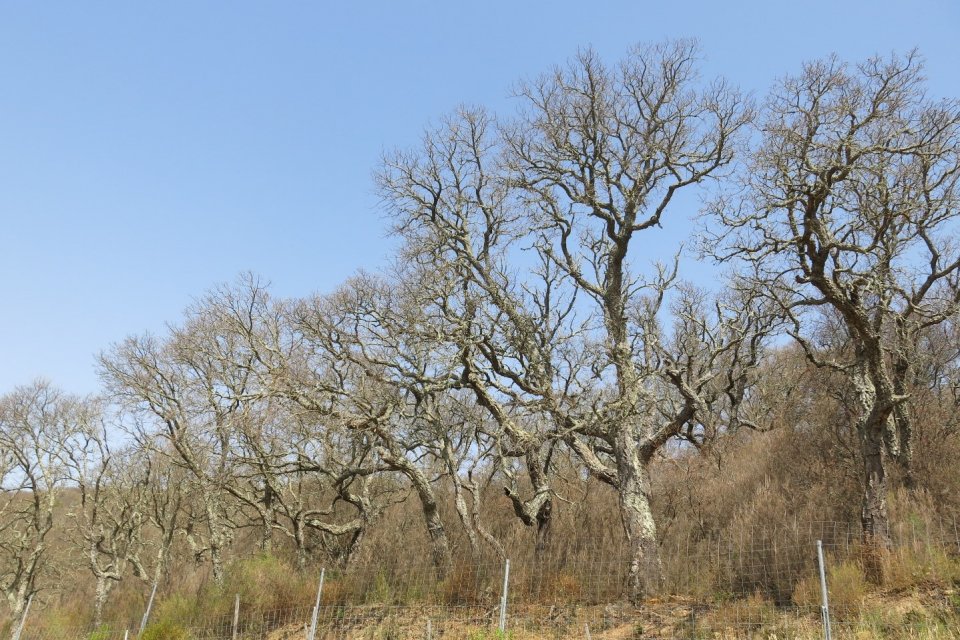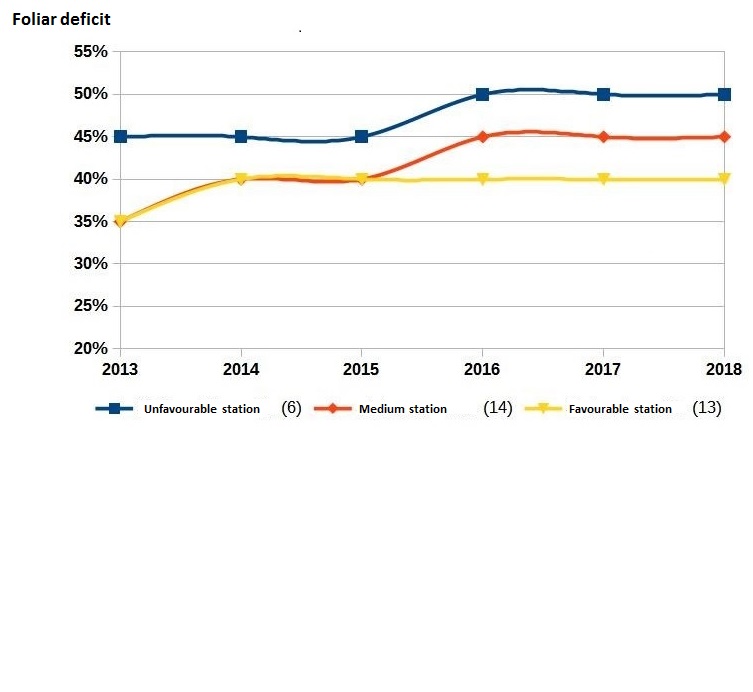
In order to be able to follow the evolution of cork oak dieback in the French cork-producing regions in the context of climate change, the South-East Forest Health Interregional Pole has set up since 2013 an annual health monitoring network (defoliation, tree mortality, branch mortality, etc.) of 33 permanent plots of 20 trees each. The study covers the period 2013-2019.
In the regions of Var, Corsica and Pyrénées-Orientales, cork oak diebacks have been observed for many years. The cork oak is of great economic interest (cork, insulation,...) and constitutes an habitat of community interest (9330 - Quercus suber forest) of environmental and patrimonial wealth for these regions as well as for the Landes de Gascogne. The implementation of health monitoring of cork oak is a major challenge for these regions.
The average foliar deficit varies from 30 to 60% depending on the case. The average percentage of the highest mortalities is 20% for Haute-Corse and 20 to 30% for the eastern Pyrenees.
In all the regions, the health of the trees is not deteriorating and the mortalities for 2013-2018 are fairly low.
This study has enabled relationships to be established between the foliar deficit, the quality of the forest stations and the level of water stress in the year preceding the plot rating. Poor work is the main abiotic factor also explaining defoliation.
Biotic factors (Bombyx disparate,…) in 38% of the observations also explain crown defoliation.
The oak forest is an ecosystem that requires the hand of Man to be maintained in accordance with good practices. It is therefore essential to consider this ecosystem through sustainable management. This management will allow a follow-up in time of the cuts and works (harvesting the outer bark of cork oak or “demascling”) to be carried out to produce cork of quality while respecting the environmental and patrimonial value of the cork oak. In order to limit the impact on trees, it is important to avoid the exploitation of cork on stressed trees.
It would be interesting to develop these plots and to define a common methodology in other cork producing countries (Portugal, Spain, Italy, Sardinia,...).
The follow-up showed that tree injuries due to poor workmanship were the main abiotic cause of the observed health problems. (Charcoal canker)
The poor quality of the forest station is a factor in the deterioration of the health of the trees.
A direct link between meteorological events (hydric stress, etc.) and the sanitary state of the suberaies has been demonstrated.
The network of the South-East Forest Health Interregional Pole relies in the region on correspondents with recognized technical expertise in tree health assessment.
The presence of pathogens in the plots is likely to be underestimated.
The impact of Bombyx disparate on the health status of cork oaks could not be optimally assessed.
The detection of Phytophthora sp. in the laboratory will be improved by the use of field kits (ELISA test).
Generally speaking, the installation of this network of observation plots for the sanitary surveillance of the cork oak finds its interest in its installation in time in order to apprehend, progressively with the campaigns, the factors responsible with precision.
Jean-Baptiste DAUBREE, jean-baptiste.daubree@agriculture.gouv.fr, http://draaf.paca.agriculture.gouv.fr/Sante-des-forets
Further information
Institut Méditerranéen du Liège, (2006).Pathologie de la suberaie en France - Ravageurs et maladies du chêne-liège
Jean-Baptiste DAUBREE

Evolution of the median foliar deficit by forest station (Jean-Baptiste DAUBREE
